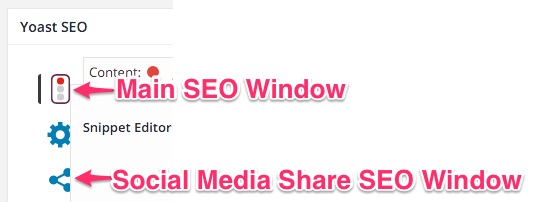 As I’ve discussed before, the way to pull all of your different digital tools together is to use a Content Marketing strategy. To do this, of course, you’re going to need to implement a system to consistently create online content. When I say “online content,” what I’m talking about is a called a blog. But unlike the blog that we write hear at Jacobs Media, this is a stream of stories on your website that can be the engine for your Content Marketing strategy.
As I’ve discussed before, the way to pull all of your different digital tools together is to use a Content Marketing strategy. To do this, of course, you’re going to need to implement a system to consistently create online content. When I say “online content,” what I’m talking about is a called a blog. But unlike the blog that we write hear at Jacobs Media, this is a stream of stories on your website that can be the engine for your Content Marketing strategy.
As I work with stations across the country to get their blogs up and off the ground, the biggest challenge they run into is usually not technical; it’s human. Let’s face it: many air talent didn’t get into the broadcasting business because they wanted to write. Often, we’re asking them to learn a new skillset.
Blogging is not a one-shot deal. It is something that you have to work at week in and week out. You must develop new habits. This requires patience and discipline. Too often, we show our air talent how to write a blogpost once and then expect them to be experts at it. Inevitably, they grow frustrated and the blog suffers.
One of the ways you can help your staff become better bloggers is to create support documents that show them what they need to do. I recommend two types:
1. Written Instructions
Create a document with clear step-by-step instructions for creating a blogpost. When you write these, make no assumptions about what people already know. You should be able to hand this document to a stranger off the street and they should be able to create a blogpost.
Here are some tips:
Write in outline form. Number each step individually to make it easy for people to follow. Be sure not to combine two steps into a single number in your outline.
Use the exact same words that are on the site. Don’t write, “Click the button;” write “Click the ‘Publish’ button.”
Include screenshots. A picture speaks a thousand words. Sometimes, it’s best to show people what they need to do. When I create support docs, I use Skitch to take screenshots and annotate them.
Be careful about the sequence. Don’t write “Click the ‘Activation’ link at the bottom of the page.” This sentence is out of order. After all, people have to scroll to the bottom of the page before they can click the link. It will be easier for people to follow if you write, “At the bottom of the page, click the ‘Activation’ link.”
Make this document easy to find. Upload it to a shared server. Leave a printed copy in the air studio and the jock lounge. Post a note in the air studio and jock lounge telling people where they can find this guide.
Here are some of the instructions I wrote for configuring the Yoast SEO WordPress plugin on the Jacobs Media site:
- In the Yoast SEO window:
- Main Window (3 Dots):
- In the Snippet Editor, enter your focus keyword to see how well optimized your post is
- Enter a post title to appear in search engines; the same title as the blogpost should work if you have included keywords
- Enter a post description that will appear in search engine results. Include keywords.
- Look at the Content Analysis. Try to fix any issues marked with red or orange dots
- Main Window (3 Dots):
- In the left corner of the Yoast SEO window, click the Share icon (3 dots connected by two lines):
- On the Facebook tab:
- Enter the title of this post that should appear when it is shared on Facebook; usually the blogpost title will work
- Enter the Facebook description; usually the same description that you used for search engines will work
- Select a Facebook image
- Click on the Twitter bird to bring you to the Twitter tab:
- Enter the Twitter title; usually the blogpost title will work
- Enter the Twitter description; usually the same description that you used for search engines will work
- Select a Twitter image
- On the Facebook tab:

2. Video Tutorials
Some people are visual learners, so it’s also helpful to create a screenshot video with narration to explain how to create a blogpost. There are a number of programs that will enable you to record a video of your computer screen (I use Telestream’s Screeflow or QuickTime). Use a mic to record yourself as you explain the process.
Once you have created the video, you will need to put it in a place where your staff can find it. If you save it on a shared server, post notes in the air studio and jock lounge so people know where to find it. You can also upload it to YouTube and set the video to ‘Unlisted’ (only people with the link can watch it) or ‘Private’ (you can share it with specific individuals who will need to log into see it; make sure you share it with people using their Gmail addresses, not their company email address, as their YouTube account is likely to use their Google email address.)
For example, here is an example of a video I created that shows people how to share their podcast episode on social media.
Creating the proper support documentation for your blog can remove a lot of frustration from the process and solve problems before they begin. With these tools, you dramatically increase the chance of your station’s blog becoming successful.
More Digital Tips
- How to Handle COVID Vaccination Requirements with Online Event Registration
- Use Google Analytics to Measure Your Radio Station Website’s Performance
- How Radio Can Use the Web to Take Advantage of Past Interviews
- Examples of How Radio Stations Can Use ChatGPT’s Artificial Intelligence
- How to Write a Social Media Policy for Your Radio Station
- A Simple Digital Treat to Thank Your Radio Listeners This Thanksgiving - November 13, 2023
- Interview Questions When Hiring Your Radio Station’s Next Digital Marketing Manager - November 6, 2023
- A Radio Conversation with ChatGPT: Part 2 – Promotions - October 30, 2023




